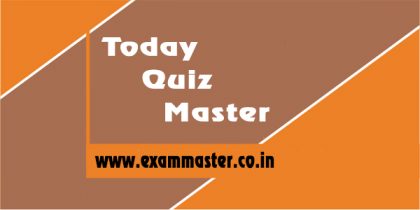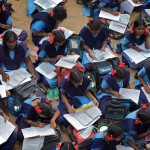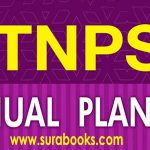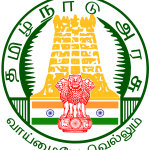
1. From whom did the English obtain the lease of Madras in 1639
A) The ruler of Golcunda
B) The ruler of Carnatic
C) The ruler of Mysore
D) The ruler of Chandragiri
Explanation : Ans : (D)
Madras was ceded to East India Company in 1639 by the Raja of Chandragiri with permission to build a fortified factory which was named Fort St. George.
In 1639, Francis day founded the city of Madras, where permission to build a fort was obtained from the Raja of Chandragiri, which was named Fort St. George.
The English got permission to build a fortified factory at Fort St. George from last Vijayanagara emperor, Raja of Chandragiri.
2. NDC refers to
A) National Defence Council
B) National Demographic Commission
C) National Development Council
D) National Development Commission
Explanation : Ans : (C)
The National Development Council (NDC) was established in August 1952 by an executive resolution of the Government of India on the recommendation of the First Five Year Plan (draft outline). It is neither a constitutional body nor a statutory body.
On th 1st of January, 2016, it was reported that the government is also going to abolish the National Development Council (NDC) and transfer its powers to the Governing Council of the NITI Aayog. However, till now, such a resolution has not been passed.
The NDC is composed of the following members.
The Prime Minister of India (Chairman)
All Union Cabinet Ministers
The Chief Ministers of all the states
The Chief Ministers / administrators of all Union territories.
Members of the Planning Commission (now NITI Aayog)
The secretary of the Planning Commission (now NITI Aayog) acts as the secretary to the NDC.
The NDC is also provided with administrative and other assistance for its work by the Planning Commission (now NITI Aayog)
The NDC is the “highest decision – making authority”, below the Parliament, responsible for policy matters with regard to planning for social and economic development.
3. Select the effect which is related to superconductivity from the following
A) Seebeck effect B) Joule-Thomson effect
C) Stark effect D) Meissner effect
Explanation : Ans : (D)
Seebeck effect : In 1821, German Physicist Thomas Johann Seebeck discovered that in a circuit consisting of two dissimilar metals like iron and copper, an emf is developed when the junctions are maintained at different temperatures.
Two dissimilar metals connected to form two junctions is called thermocouple. The emf developed in the circuit is thermo electric emf.
The current through the circuit is called thermoelectric current. This effect is called thermoelectric effect or Seebeck effect.
Thomson effect : When a current flows through unequally heated conductors, heat energy is absorbed or evolved throughout the body of the metal. This effect is called as Thomson effect
Thomson coefficient () :
The amount of heat energy absorbed or evolved when one ampere current flows for one second (one coulomb) in a metal between two points which differ in temperature by 1°C is called Thomson coefficient. It is denoted by . Its unit is volt per°C.
Stark effect : The Stark effect is the shifting and splitting of spectral lines of atoms and molecules due to presence of an external static electric field.
The amount of splitting and or shifting is called stark splitting or stark shift.
The Stark effect is the electric analogue of the Seeman effect where a spectral line is split into several components due to the presence of a magnetic field.
Meissner effect : The Meissner effect (or Meissner – Ochsenfeld effect) is the expulsion of a magnetic field from a superconductor during its transition to the superconducting state. The German Physicists Walther Meissner and Robert Ochsenfled discovered this phenomenon in 1993 by measuring the magnetic field distribution outside superconducting tin and lead samples.
The samples in the presence of an applied magnetic field, were cooled below their superconducting transition temperature, whereupon the samples cancelled nearly all interior magnetic fields. The ability for the expulsion effect is determined by the nature of equilibrium formed by the neutralization within the unit cell of a superconductor.
4. The molecular formula of Chromite ore is
A) FeO. Cr O3 B) FeSO4. Cr2(SO4)3
C) FeO. Cr2O3 D) Cr2O3
Explanation : Ans : (C)
L.N. Vanquelin, a french chemist discovered a new element in 1797, while examining a mineral found in Siberia. It was named chromium because it forms coloured compounds [Greek word, Chroma – colour].
Metallic chromium does not occur in the native state. In India chromite ore occurs in Bihar, Mysore, Chennai and Bombay.
The important ore of chromium is chromite or chrome ore, FeO Cr2O3.
The chief ore of chromium is chromite ore.
Uses of Chromium :
In Chrome-plating. The articles to be plated with chromium are made the cathode in an electrolytic bath consisting of chromic acid and sulphuric acid while the anode is made of a plate of lead. During electrolysis chromium deposits on the article (cathode). Generally the articles are first plated with nickel and then subjected to chromium plating.
In the manufacture of alloy steels (e.g.) chrome steel, chrome vanadium steel, stainless steel and tungsten steel.
Chrome nickel steel is used for armour plates.
Chromium salts are used as mordants and in the manufacture of coloured glass and pottery.
Chromium compounds are used in dyeing as pigments and in tanning of leather.
5. During expiration our body loss of water amount
A) 400 ml B) 300 ml
C) 200 ml D) 100 ml
Explanation : Ans : (A)
Water is a major constituent in the body of all mammals. The total body water content varies with age, sex and body weight. In a new born child it is 85 to 90% of body weight. In young adults it ranges from 55 – 60%.
Of the total body water, about 2/3 is found as intra-cellular fluid (ICF) and 1/3 as extra-cellular fluid (ECF). About 25% of ECF is the Plasma of blood.
The average water intake is around 2500 ml/day (as water 1400 ml).
Water loss happens through four routes. They are :
Urine (about 1400 ml)
Expiration (400 ml)
Through skin (600 ml)
Loss in faeces (100 ml).





